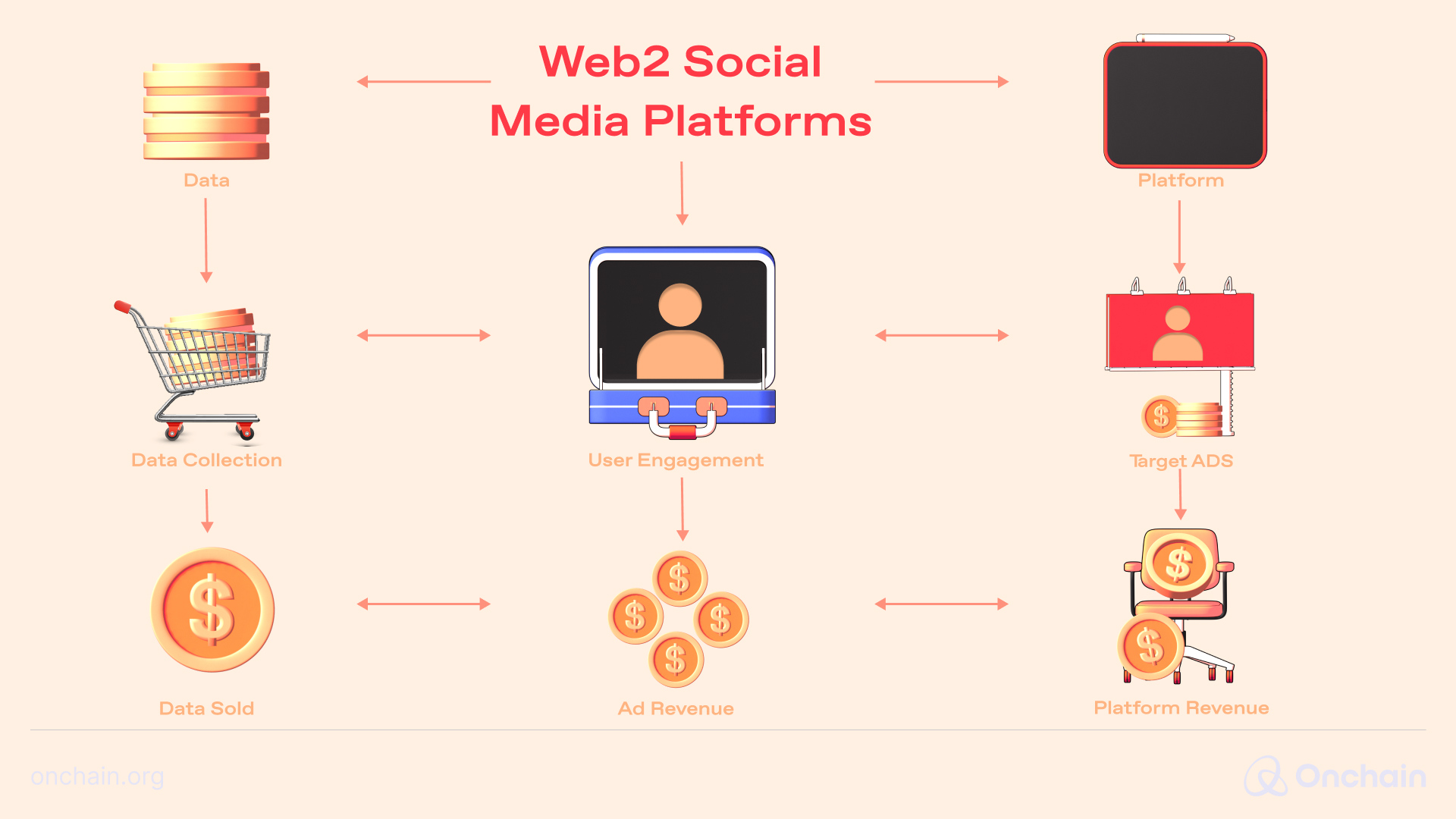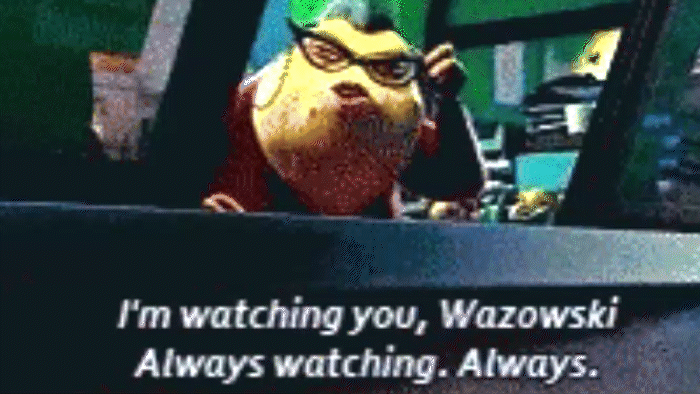Social media users have been complaining about questionable data usage since social media’s advent. For so long, complain was all you could do. There were no alternatives, and traditional platforms could remain complacent. Now, decentralized social media is getting massive traction, as you can learn from our in-depth DeSoc report.
Traditional platforms know. And they’re jealous. So, while disparaging DeSoc to its face, traditional social media apps are paying with the Web2 and Web3 intersection. We know you’re curious about what they’re up to (and if it’s working) so we sleuthed around. Here’s what we found.
How Web2 social media platforms typically work
Traditional social media sells a story that their platforms are free and open to the public, a great equalizer of communication worldwide. While that utopic view is highly desirable, the reality is far more dystopian. “If it’s free, you’re the product,” has been said over and over. For traditional social media, it’s true.
Web2 social media platforms depend on your data entry (sharing images, text, videos, and more) to function. Without you, they have no business model. Not only are they selling your data, they use it to target and influence certain groups (as seen in recent elections) as well as train AI models on it without your consent. In the worst case scenario, your profile can be deleted on a whim and all your hard work, especially any monetization, would be gone.

The major hallmarks of Web2 social media (and how to tell a platform isn’t Web3 native) are:
- A lack of data ownership
- Forced ad viewing
- No profit sharing or user voting
It’s no wonder Web2 platforms are getting nervous about decentralized social media (though they won’t admit it). To you, it’s probably a no brainer. Social media users have been complaining about the traditional platform’s harmful practices and exploitation for years. A new paradigm was bound to develop.
And now it has.
Web3 integrations into Web2 social media
It’s time for traditional social media to love us or lose us. Major platforms began exploring the Web2 and Web3 intersection circa 2018. It’s probably no surprise that user reception has been a roller coaster.
How do you tell the difference between those platforms struggling with Web3 and those that really mean it? Let’s have a look at some of the features that have been released across five popular platforms and how their users have reacted.

Web3 features on Telegram
Can you believe Telegram is over a decade old!? Originally a Web2 social media platform, the popular messaging platform pivoted toward Web3 starting in 2018 with their ICO. While the SEC took down the TON coin (which was later repackaged by users), Telegram has continued to make Web3 attempts, including a wallet rollout and tokenized usernames in 2022.
Beyond this, Telegram is extremely supportive of community-built Web3 features like crypto bots. What’s even more telling is that the community resurrected TON and is managing it outside of Telegram’s corporate reach — with Telegram’s blessing.
What we like about Telegram’s approach is that, despite speed bumps, the team continues to enthusiastically support the Web3 activities of its users and have continually added Web3 features over time.
Web3 features on Discord
Discord is well-known to blockchain users. It’s the central messaging hub for DAOs and emerging Web3 businesses. Yet, Discord’s own decentralization has not gone well. While Discord attempted an NFT rollout in 2021, community backlash halted progress.
Since then, Discord as a company hasn’t made further moves toward Web3 integration. Community-developed crypto bots do all the heavy lifting. Their use on the platform while corporate stays silent is a telltale sign of Discord’s uncertainty about becoming a decentralized social media platform. It seems their brand name is more ironic than they intended. 🙃
Web3 features on Reddit
We took a deep dive into Reddit’s Web3 features in a previous article. What we found was a bumpy road. Reddit made waves with Web3 features like community points, wallets, and NFT avatars. However, only a specific subset of their user base was interested. Their NFT attempts and lately the community points feature were shuttered while collectable avatars still live.
What we’re wondering is what’s next? Reddit’s user base includes a massive Web3 community, but the rest of their 267 million users are less keen. Does it make sense for Reddit to invest in Web3 features, and will any support decentralization? We’ll see.

Web3 features on Facebook
It comes as no surprise that Facebook is likely to invest in new features if it believes it will retain users. In 2022, the platform of 2.9 Billion users explored integrating wallet connections so users could trade NFTs on both Facebook and Instagram. They’ve since rolled the feature back, a classic example of testing the water to retain users rather than invest in decentralization. Woopsie.
Web3 features on Twitter
2022 was a massive year for Twitter. In January, the platform explored profile picture NFTs that were supported by an impressive array of wallets. Then, in October, Twitter was sold to Elon Musk. At that time, Musk was disparaging of Web3, though he has lately changed his tune. Will we see more blockchain integration from X? Given that it is the go-to platform for Web3 research, we believe so. We’ll have our eye on whether those features go toward more than making the platform money. 👀
Web2 and Web3 intersection: Does it work?
It’s clear that half-hearted integration of Web3 just doesn’t work. If a platform’s user base isn’t interested, or if the platform is just trying to capture hype, the feature will fall flat. What’s more, many of the features we’ve seen offered by Web2 social media platforms completely miss out on the decentralized social media mechanisms users want.
Web3 is about the user. Period. The majority of Web2 social media platforms won’t roll out a feature unless they think it will make them money or retain their users. When NFTs hit the market from such a platform, it can’t help but smell fishy. We parse this further in our DeSoc Report. Have a look to go deeper into the Web2 and Web3 intersection.
What do you think? Will Web3 from platforms like Facebook ever work? Tag us — not on Facebook — on Farcaster.



